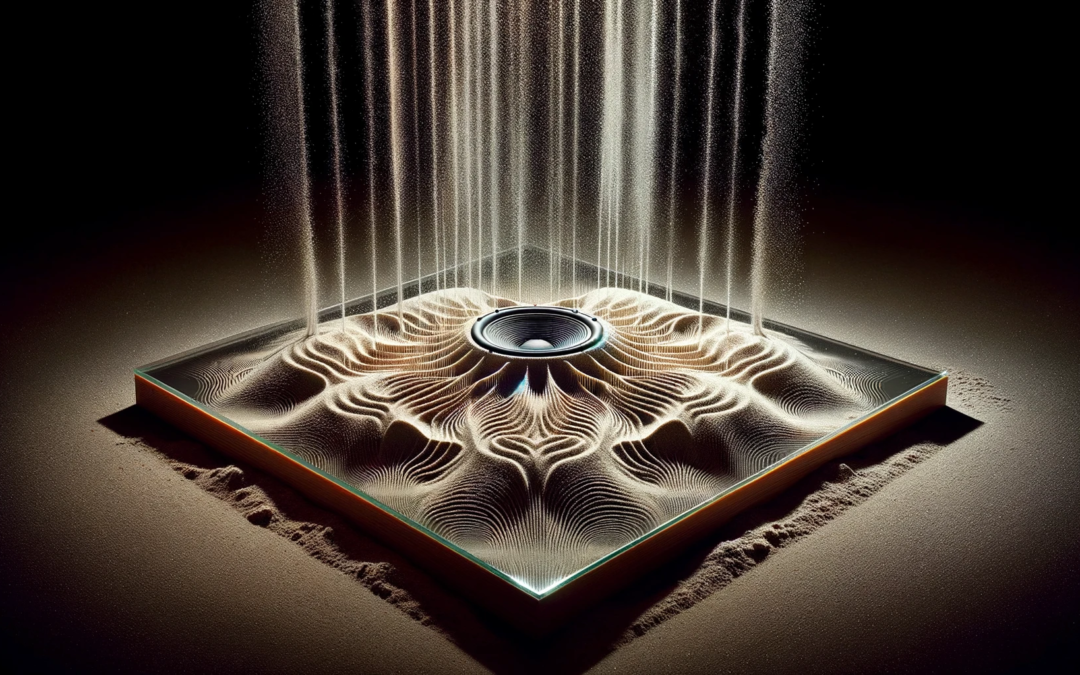Cymatics, a term derived from the Greek word ‘kyma’, meaning ‘wave’, is a captivating field of study that explores the intersection of sound, light, and physical form. This article delves into the scientific principles behind cymatics, its historical context, current applications, and potential future implications, particularly in understanding AI.
Historical Context and Fundamental Principles
The study of cymatics can be traced back to the ancient Greek philosopher Pythagoras, who first noted the relationship between vibrations and physical structures. However, it was Ernst Chladni, an 18th-century German physicist and musician, who laid the foundations of modern cymatics. Chladni’s experiments, involving drawing a bow across the edge of a metal plate covered with sand, led to the formation of intricate patterns, now known as Chladni figures.
The fundamental principle of cymatics is that sound waves, which are essentially vibrations traveling through a medium (like air or water), have the capability to organize matter into distinct patterns. These patterns change with variations in the frequency and amplitude of the sound waves.
Current Applications and Technological Innovations
Today, cymatics finds applications in several fields. In the realm of acoustics, it helps in the visualization and study of sound waves and their effects. It’s also employed in materials science to understand the structural properties of different materials when subjected to vibrational frequencies.
In the world of art and design, cymatics inspires artists and architects, leading to creations that are not only aesthetically pleasing but also resonate with natural harmonic frequencies. Moreover, cymatics plays a role in therapeutic settings, where sound therapy utilizes the principle that certain frequencies can induce relaxation and healing.
Cymatics and AI
The intersection of cymatics and AI is particularly intriguing. As AI systems become more advanced, understanding the patterns and structures formed by sound and light could provide insights into developing AI algorithms that mimic natural processes. For instance, the study of cymatic patterns could influence the way AI processes auditory and visual information, leading to more sophisticated and human-like AI systems.
AI can also be used to analyze and interpret cymatic patterns, potentially uncovering new scientific understandings or artistic expressions. This symbiotic relationship between AI and cymatics could lead to advancements in both fields.
Ethical Considerations and Future Implications
As with any scientific field, ethical considerations are paramount. In the context of AI, ensuring that developments are aligned with human values and do not pose unforeseen risks is crucial. The use of cymatics in AI must be approached with a clear understanding of its potential impact on society.
The future of cymatics promises exciting possibilities. It could lead to the development of new materials with unique properties, influenced by sound and light patterns. In medicine, cymatics could advance diagnostic techniques, where sound waves are used to create detailed images of internal body structures.
Conclusion
Cymatics, as an intersection of sound, light, and physical form, offers a unique perspective on the natural world. Its applications, ranging from artistic expression to scientific research, demonstrate its versatility. As we venture into the realm of AI, the principles of cymatics could play a crucial role in shaping future technologies. This interdisciplinary field, with its rich historical roots and forward-looking potential, is a testament to the endless possibilities of scientific exploration and innovation.










